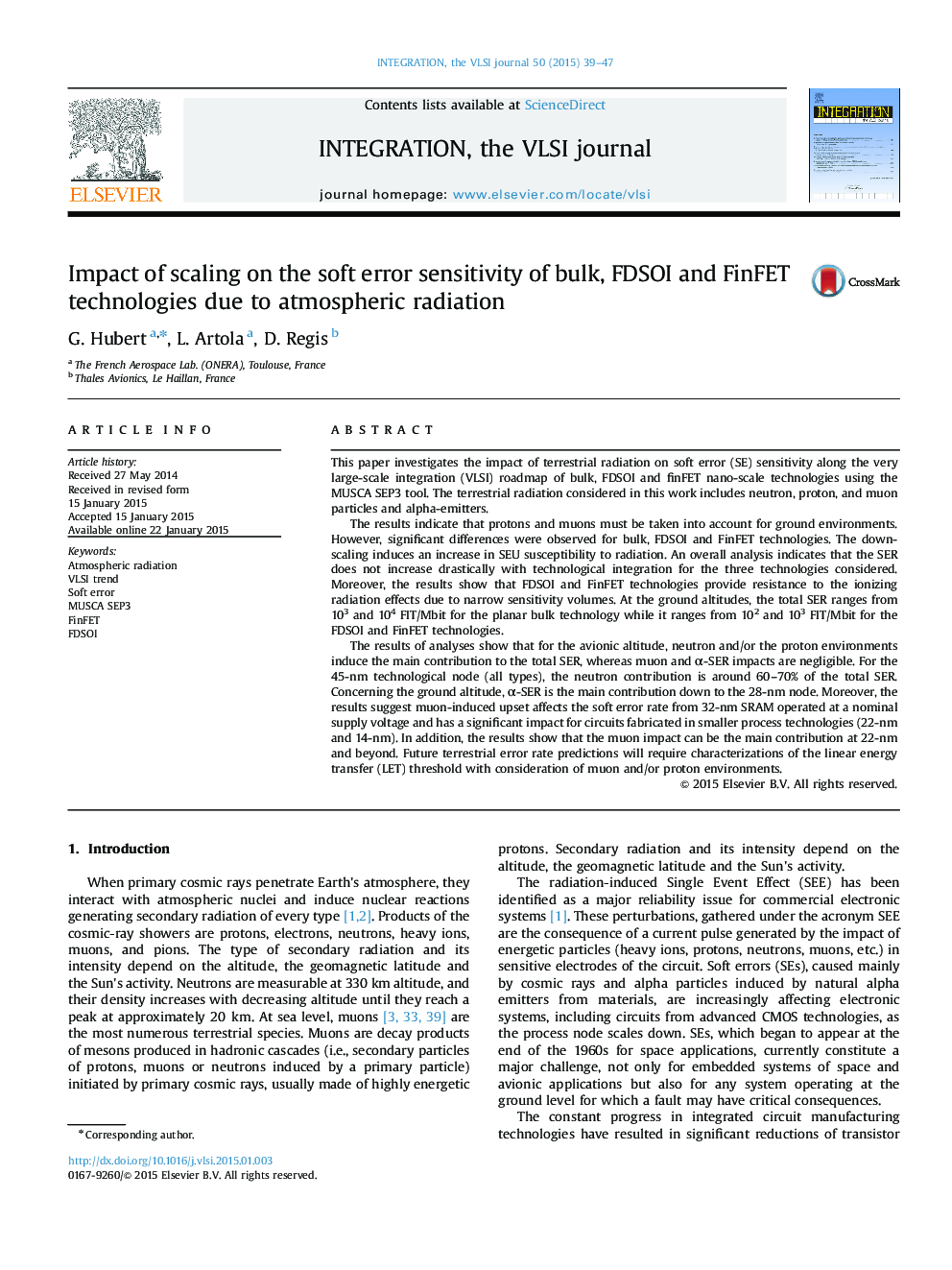| Article ID | Journal | Published Year | Pages | File Type |
|---|---|---|---|---|
| 6942333 | Integration, the VLSI Journal | 2015 | 9 Pages |
Abstract
The results of analyses show that for the avionic altitude, neutron and/or the proton environments induce the main contribution to the total SER, whereas muon and α-SER impacts are negligible. For the 45-nm technological node (all types), the neutron contribution is around 60-70% of the total SER. Concerning the ground altitude, α-SER is the main contribution down to the 28-nm node. Moreover, the results suggest muon-induced upset affects the soft error rate from 32-nm SRAM operated at a nominal supply voltage and has a significant impact for circuits fabricated in smaller process technologies (22-nm and 14-nm). In addition, the results show that the muon impact can be the main contribution at 22-nm and beyond. Future terrestrial error rate predictions will require characterizations of the linear energy transfer (LET) threshold with consideration of muon and/or proton environments.
Related Topics
Physical Sciences and Engineering
Computer Science
Hardware and Architecture
Authors
G. Hubert, L. Artola, D. Regis,
